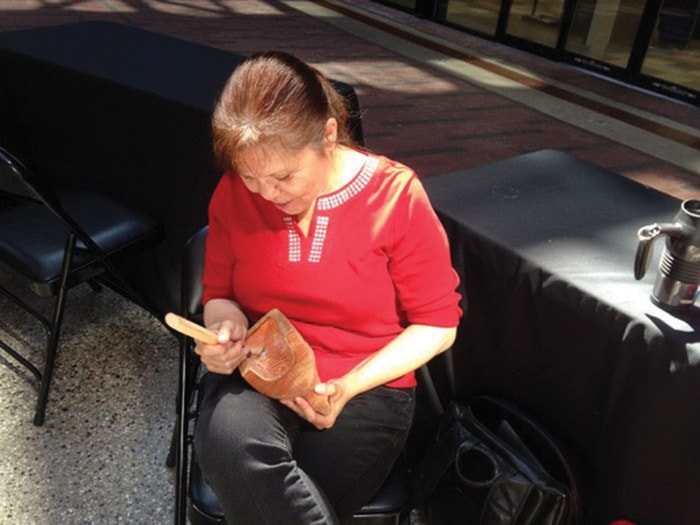When Lou-ann Neel was 12 years old, she fell in love with the art of carving.
The Victoria resident and member of the Kwakwaka’wakw peoples in Alert Bay, remembers falling in love with the smell of the cedar, learning how to work the wood and getting to know the grain as part of the First Nations studies program at S.J. Willis in Victoria.
“I just loved carving. The few lessons that I got in junior high, I just loved — it just fascinates me,” Neel said.
Even after she graduated from S.J. Willis and moved on to Victoria High School, Neel decided to split her days between the two schools so she could continue the art program.
However, as she grew older, she heard from some people that women couldn’t be carvers and began to believe it was a predominantly male art form — an idea that stuck with her for many years and caused her to take a step back from the work she loved so much.
“When I started learning how to carve, I kind of backed off a bit for a while,” said the now 53-year-old.
She eventually decided to pursue other artistic ventures, mostly focusing on creating traditional art forms from her people such as textiles, traditional regalia (button blankets and painted capes), paintings and contemporary clothing.
Traditional art forms of the Kwakwaka’wakw people represent the legends, story and history of its people.
“It’s much more than surface aesthetic art, it’s rooted in all kinds of traditions,” Neel said, adding she learned dozens of legends along the way. “My responsibility was to also learn the legends that were told through the works I was making or to learn the legend and create the pieces.”
Most recently, Neel was awarded one of two mid-career (for people aged 27 and older) art scholarships from the YVR Art Foundation, a non-profit organization that supports the development of First Nations art and artists in B.C. and the Yukon. Neel was the only artist from Vancouver Island to be selected.
Neel will use the scholarship to complete a project that brings her back to her original passion — carving.
She’ll spend the first few weeks learning the proper technique to use the knives and also how to sharpen and clean them properly. Then she’ll move on to the specifics of learning how to make specific cuts to create certain effects.
For the last 30 years, Neel has been studying the work of her grandmother and great-grandfather, who were also carvers, and hopes to recreate a replica of a totem pole called the Totem Land Pole, which her grandmother carved in the 1940s when she was in Vancouver.
The pole, which will take roughly six months to complete, will be about 18 inches high and will include a thunderbird, and a globe with the B.C. coast at the centre of the universe.
Neel hopes her work will inspired other women to take up carving as well.
“It was just a misbelief (that women can’t be carvers) that I gained somewhere along the way,” Neel said, adding she only knows of a handful of First Nations female carvers on the Island.
“It’s something that I think was impacted by colonization. I’m hoping to get myself back into it, but also get my nieces and nephews to take it up and hopefully get the message out to young girls that they can carve too.”
Susan Jackson, executive director of the YVR Art Foundation, said it’s important to support local First Nations artists.
“I think that we have an amazing number of First Nations artists in B.C. and the Yukon,” she said. “Our mandate is to provide support to both emerging and mid-career artists.”
